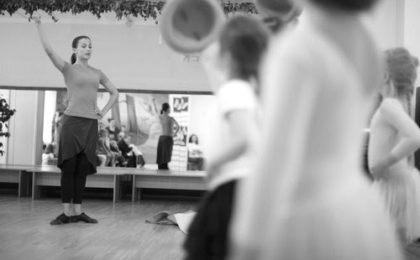We all know good manners cost nothing, simple P’s and Q’s (that’s Please and thank you for anyone not familiar with that term) are the very basics expected of you. But do you know what’s expected of you when you step into the studio or class? I’m here to enlighten you dance class etiquette!
Appearance and Dance Class Etiquette
Most schools and studios will have a set uniform. It’s important to stick to this uniform for a couple of reasons. Firstly, like school, everyone will look exactly the same. No one will stand out for the wrong reasons, and if you go out as a group to an event, you’ll be easily recognized as to which dance school you attend. Secondly, your teacher will be able to see your body clearly. I know this might not sound appealing, but your teacher will be able to visibly see muscles that are/need to be engaged, so it will help with corrections, this helping to improve your technique.
Uniform should be kept clean and neat, no ladders in tights or holes in ballet slippers. Keep on top of when items go beyond a quick wash and repair.
Hair should always be neatly and securely off the face in a tight bun. Not only is it distracting for you and your teacher if you’re constantly fiddling with your hair, stopping you from fully concentrating on your dance, it’s also a health and safety risk. A whip in the eye from a loose ponytail or plait when executing a pirouette can do some real damage!
Both these aspects of appearance are important for a dance class etiquette and show your teacher you are serious about dance and your class and you’re ready to work hard.
Punctuality
This is a biggie. It does not mean arriving when a class is about to start. My teacher always used to say to us
“if you arrive on time, you’re already late”
Think of how long it takes everyone to enter the room, say their hellos, put on shoes and warm up. At least 10 minutes. So arriving at the class is about to start will delay the class by that amount of time. Which might not sound a lot, but it soon accumulates over a few classes. That’s less dance time. Try and arrive 10-15 minutes before class, put on required shoes and do a little warm up. This means when you enter the room, you’re ready to start class with a warm body, meaning you’re less likely to injure yourself, and more able to execute the steps to your full potential.
Interruptions
Always try and keep any interruptions to a minimum, but things will crop up, toilet brakes, loose ribbons, etc. Wait until your teacher has stopped talking, politely raise your hand and ask to be excused. If you are in the middle of an exercise, wait until the music has finished. Similarly, when coming back into the room, wait until you can hear the music stop before re-entering. This is so you don’t distract your fellow dancers from what they are working on.
The same applies if you are late for class. Get ready outside of the class, and wait until the music has stopped before entering. This may not always be possible if you’re in back to back classes, all the more reason to make the transition as quick as possible. Apologize for being late to your teacher and quietly and quickly take your place, ready to start work. Your teacher does not want to hear lengthy excuses, nor do they need to, it will only delay class further. If you feel the need to explain, wait until the class has finished and speak to them at the end. This point is also very important in a dance class etiquette.
Demeanour
Be mindful of how you act in class between exercises. Body language says a lot! Try not to fold your arms, slouch and sit and lean into one hip. These are all passive aggressive postures, and although you may not mean them to be, they may be interpreted differently by someone. Also, it may give your teacher the impression that you’re not interested in being there or working on corrections.
If the teacher is giving you a correction, listen intently and look like you are. Also, give other students the same curtsey, keep quiet whilst someone else is receiving corrections, so they don’t miss anything.
Goodbyes
You probably already do a set curtsey or bow at the end of class, but it’s good manners to thank the teacher again and say goodbye as you are leaving, to show you really mean it. Don’t forget your fellow students too! But try to keep chit-chat to a minimum. There will probably be another class on straight after yours, and you don’t want to hold their class up! If you have something to say, wait until you’re outside of class, then you can take as long as you like! Some schools will vary how strict they are with these kinds of things, and all schools and teachers will differ. But it’s good to be aware of how to act and what may be expected of you, particularly if you are considering a career with a professional company.
